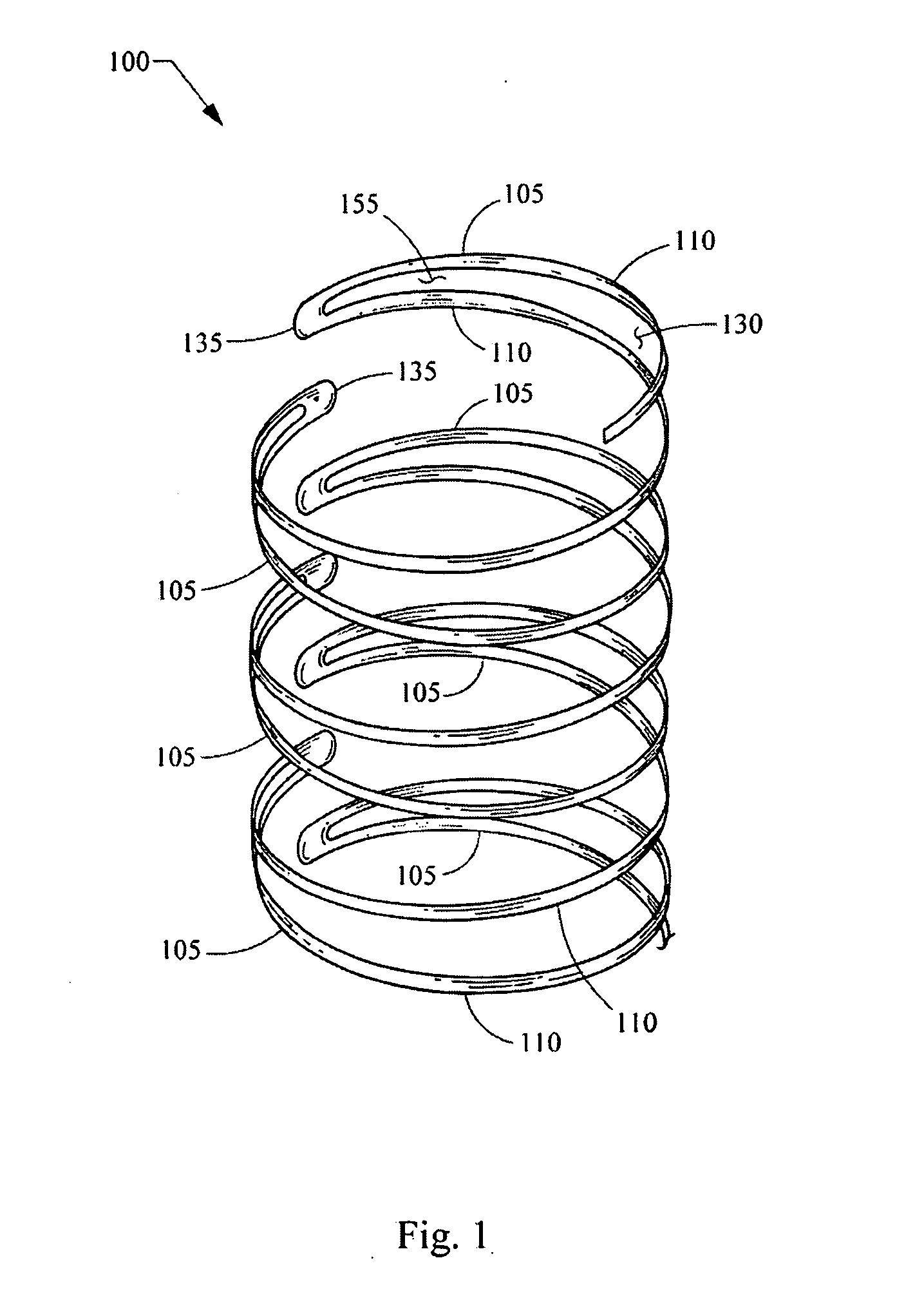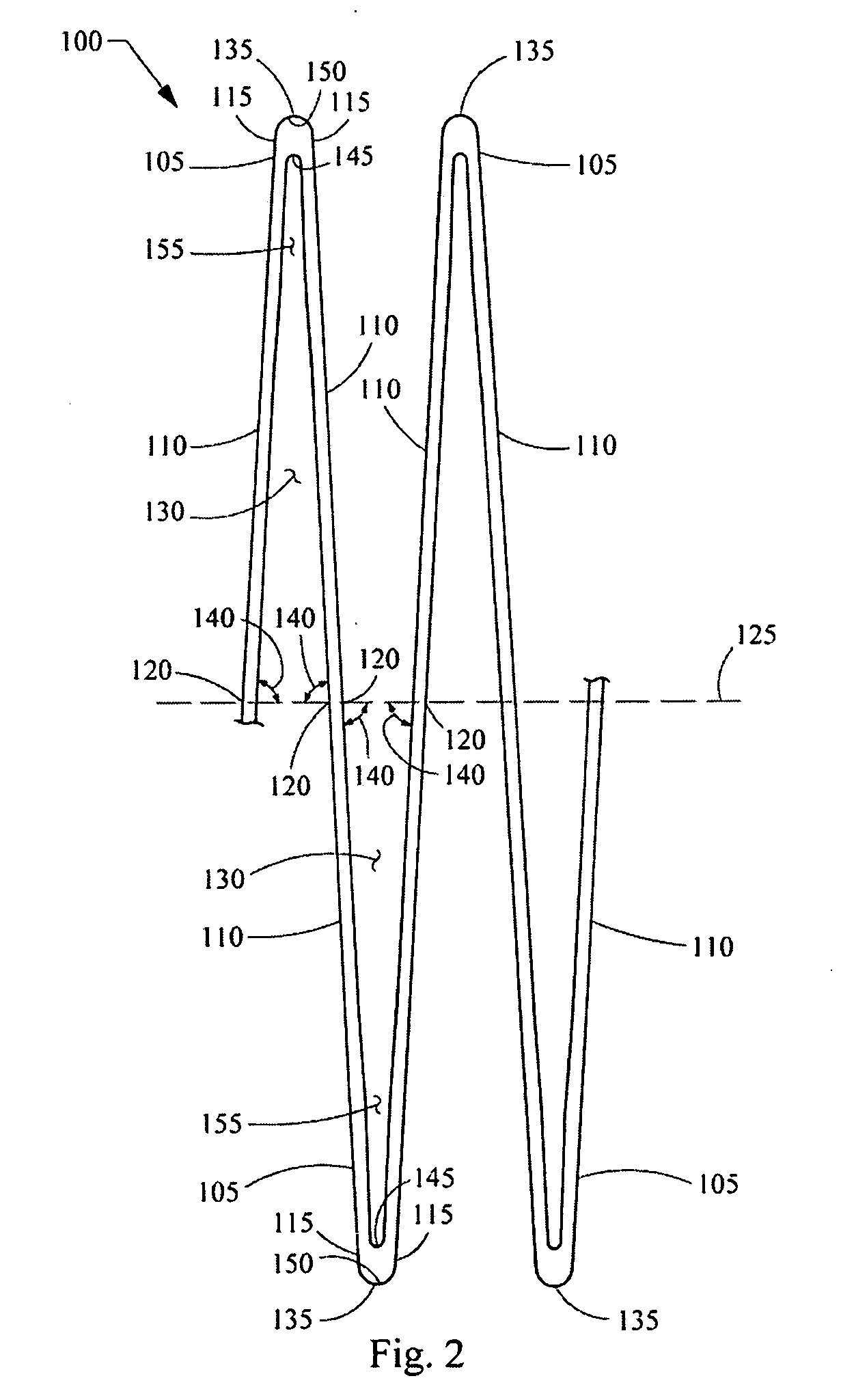Expandable stent
a stent and expandable technology, applied in the field of expandable stents, can solve the problems of impairing the ability to hold the vessel open, permanently crushing, and peripheral arteries are particularly susceptible to external trauma, and achieve high axial flexibility in bending, long fatigue life, and high radial force. uniform
- Summary
- Abstract
- Description
- Claims
- Application Information
AI Technical Summary
Benefits of technology
Problems solved by technology
Method used
Image
Examples
example 1
[0052] A finite element analysis (FEA) was carried out to calculate radial force for several embodiments of the present stent. These results were compared to FEA data for a prior art stent, the Cook Zilver®. In the FEA, the stents underwent a basic crimp from a 10 mm outer diameter to a 7.5 mm outer diameter while total radial force was calculated.
[0053] The radial force data were then normalized by the length of each stent. The results, in terms of radial force per length versus expanded diameter, are shown graphically in FIG. 10 for the following stents: a prior art stent (Zilver®, 10 mm in length); Stent 1 (10.67 mm in length), which corresponds to the first embodiment of the inventive stent as shown in FIG. 1 and FIG. 2; Stent 2 (12.84 mm in length), which corresponds to the second embodiment of the inventive stent as shown in FIG. 3 and FIG. 4; Stent 1 including a closed cell region (10.67 mm in length), which corresponds to the third embodiment of the inventive stent as shown...
example 2
[0054]FIG. 11 shows the relationship between radial force and stent thickness for the first embodiment of the inventive stent. As in the preceding example, the stents underwent a basic crimp from a 10 mm outer diameter to a 7.5 mm outer diameter while total radial force was calculated using FEA.
[0055] The FEA data presented graphically in FIG. 11 show radial force versus expanded diameter for three different stent thicknesses: 0.203 mm (0.008 inch), 0.127 mm (0.005 inch), and 0.076 mm (0.003 inch). FIG. 11 shows that radial force is highest for the largest stent thickness (0.203 mm (0.008 inch)).
[0056] The stents described herein may be advantageously used in the superficial femoral artery (SFA), which may experience large and repetitive external traumas. Such stents also may be useful in other applications. When used to treat the SFA and other peripheral arteries, the described stents may provide desirable properties to successfully treat occlusions and other conditions. For exam...
PUM
 Login to View More
Login to View More Abstract
Description
Claims
Application Information
 Login to View More
Login to View More - R&D
- Intellectual Property
- Life Sciences
- Materials
- Tech Scout
- Unparalleled Data Quality
- Higher Quality Content
- 60% Fewer Hallucinations
Browse by: Latest US Patents, China's latest patents, Technical Efficacy Thesaurus, Application Domain, Technology Topic, Popular Technical Reports.
© 2025 PatSnap. All rights reserved.Legal|Privacy policy|Modern Slavery Act Transparency Statement|Sitemap|About US| Contact US: help@patsnap.com



